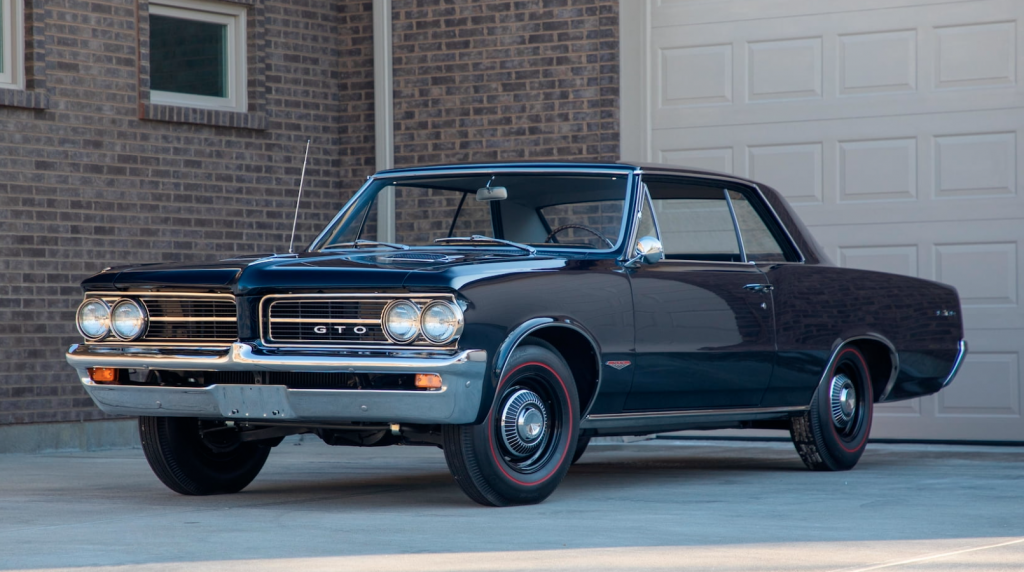
The 60s was a golden age of muscle cars and Ford played a significant role in that. Ford Mustang was the dominant car of the decade. The 1968 Cobra Jet, a legendary model, was also a top-selling Mustang. It boasted a staggering 445 pound-foot torque and 335 horsepower. Chevy made some of its most famous muscle cars in the decade, including the Chevrolet Camaro ZL1, which was only offered in a limited number. This legendary muscle car was designed by Dick Harrell and sold in a limited number.
Dodge Charger
The Dodge Charger is an iconic muscle car from the 1960s. With a design that was timeless, it's one of the most beloved of all time. The car was first shown to the media in June 1967. It featured a round rear bumper and two circular taillights. It offered a variety of engines, from a 225 cu in slant-6 to a powerful 440 cu in 'Magnum’ V8 that made 375bhp. The R/T Charger was a more powerful version. It had an upgraded suspension as well as dual tailpipes and distinctive stripes. Eventually, the Hemi Charger R/T was introduced, which had more horsepower and was more expensive.

Ford Mustang GT
Ford Mustang is the ultimate choice for anyone looking to enjoy the best of the 1960s. This muscle car was loved by 60s enthusiasts and is still the Dearborn's best-seller since the V-8 Model B Roadster of 1932. You can choose the colors, interiors, and powertrain options of this classic car, or customize one to fit your personality.
Pontiac Galaxies
Ford's Galaxie range was completely redesigned in 1964. Motor Trend magazine awarded the Car of the Year award to the entire model line. These vehicles were everything from station wagons to luxury convertibles. This was the Ford Galaxie 500, which was the mainstay of this line. It featured big V-8 engines, SUV-style trunks and seating for six. In 1965, it won the Car of the Decade title.
Chevrolet Impala SS
The Chevrolet Impala SS was originally a sedan. It was later made by General Motors as a muscle car. The SS was the highest-end model and began production in 1959. It featured a 5.3L V8 engine and a 17-gallon gas tank. It was sold in all four body colors, except for Black, White, and Red. The car's exterior was also modified for the 2006 model year. The luxury edition included leather seats, folding rear seats and a spoiler. The SS and LT came in four new exterior colors, and also included an auxiliary input.
Pontiac Super Bee
David Freiburger (editor-in-chief HOT ROD) has done extensive restoration to the Pontiac Super Bee. This classic car is from the 60s. The car sat unused for 11 years, but he finally decided to restore it for a street-legal use. The team prepared the car for seven days before taking it to Mopars Strip Las Vegas.

Buick Rivera
Buick Rivera 60s is powered by a proven V8 engine of 401cc. It's been tuned over time to produce tremendous torque. The engine bay has received a new, polished look thanks to recent detailing. Additionally, the original Wildcat445 decals on the bright red air filter have been removed. Buick's 401 horsepower engine was enough to power it, and could easily reach 100 mph.
FAQ
What is the best way to learn about car mechanics
You don't need to know anything about cars to work as an auto mechanic. Only you need to know how things work. This is why most people get started with simple jobs such as changing brake pads or tires. Then they move on to more difficult repairs.
You'll need to know how to read diagrams, understand written instructions and follow basic rules of good practice. You'll also need to be able to judge whether parts need replacing or repairing.
You should not attempt to fix vehicles without proper training and guidance. This is especially true when you are dealing with costly components like engines and transmissions.
Although you won't have to know much about automobiles, you must be familiar with the basics of mechanical engineering as well as physics. This means understanding the principles behind how engines work and how brakes function.
It is also important to remember that you will need to be able to handle many situations. You might be required to work on a vehicle that was involved in an accident. You'll also need experience dealing with breakdowns and accidents.
Finally, you must be willing to learn new skills quickly. As well as being able to diagnose problems, you'll need to be able to perform simple maintenance tasks such as tightening nuts and bolts.
What are the requirements of an automotive technician?
High school graduation or GED is required with excellent grades in English and math. It is also necessary to be able both to read and to write. Before you can start working, you will have to pass a written exam and take a series practical tests.
What is the difference in a mechanic and an auto technician?
The two are similar but not identical. A mechanic repairs cars while an automotive technician does maintenance on them.
A mechanic needs to be able and quick to use their manual dexterity. A mechanic must be able diagnose and fix problems quickly and accurately.
An automotive technician must be more technically proficient than a mechanic. They must be able to read blueprints and use tools such as drills and wrenches.
They should be able safely to perform complex procedures. They must also be familiarized in different types and electrical systems.
They must also be able to understand how various parts interact with each other.
The result is that a mechanic often earns less than an auto technician. There are many job opportunities in both.
Statistics
- According to the BLS, the median annual salary for automotive service technicians and mechanics in the United States was $44,050 in May 2020. (uti.edu)
- 52% of Mechanics in the United States think their salaries are enough for the cost of living in their area. (indeed.com)
- According to the BLS, total auto technician employment is expected to exceed 705,000 by 2030. (uti.edu)
External Links
How To
How to Become an Auto Technician
An automotive technician is responsible for vehicle maintenance and repair. He/she is employed at automobile dealerships, garages, service centres, and auto shops. Customers can rely on him/her to fix their cars, trucks and motorcycles. A technician in automotive must be able diagnose and repair problems quickly, safely, accurately, efficiently, and effectively.
A person who wants to work as an automotive technician should first obtain an associate degree from a vocational school. After completing this program the student must pass the National Institute for Automotive Service Excellence exam (ASE). ASE stands for American Society of Mechanical Engineers. There are two parts to the ASE certification exam. The first section tests your mechanical skills, while the second tests your practical knowledge. To take the test, you must visit one of the approved testing locations. These locations can be found online, or by contacting your local car dealer.
After passing the exam, a candidate must take a state exam before being licensed as an automobile technician. This process is different depending on where you live. Some states require that candidates attend training courses, while others permit them to learn independently. Some states allow technicians to become licensed right away after receiving their license. While others wait until they have had at least six years of experience as an automotive technician.
Apply to your local dealership to become an automotive technician. New employees are usually apprentices when they first get hired. Apprenticeship programs usually last three years. A student will learn to repair basic things like changing oil, adjusting brakes or replacing tires. They also learn how spark plugs are cleaned and inspect engine compartments. Advanced repairs can be done by some students, including replacing shocks, installing air filters and repairing engines. Many schools offer classes during normal business hours. However, some schools offer evening classes if needed.
Once a student completes his/her apprenticeship, he/she becomes a journeyman. Journeymen can spend up to five years learning how major systems work, including transmissions, differentials. They also learn how to adjust steering gear and suspensions. Journeymen also learn to fix complicated problems, such as rebuilding engines or troubleshooting electric components. Many employers prefer hiring journeymen because they know the job well and understand what the customer expects.
A candidate who passes all the necessary exams and gets a license might be interested in opening his/her own business. According to Bureau of Labor Statistics, there were almost 1.7 million available jobs in the automotive mechanic field in 2010. This number was expected increase 18% between 2009 - 2020. The candidate should expect to invest thousands of money in equipment and supplies if he/she decides to start his/her shop.
The salary for an automotive technician depends on several factors, including the type of employer, location, education level, and experience. A jobless person could make an average of $20,000 annually. Someone who has only a highschool diploma could earn around 21,000 dollars per year. An associate's degree earns approximately $24,000 annually. Technicians with a bachelor's degree earn about $27,000 per annum. The average annual salary for those with master's degrees was $32,000. Salary increases are common, so a professional who earns less than $30,000 now could reasonably expect to earn $40,000 or more in just a few years.